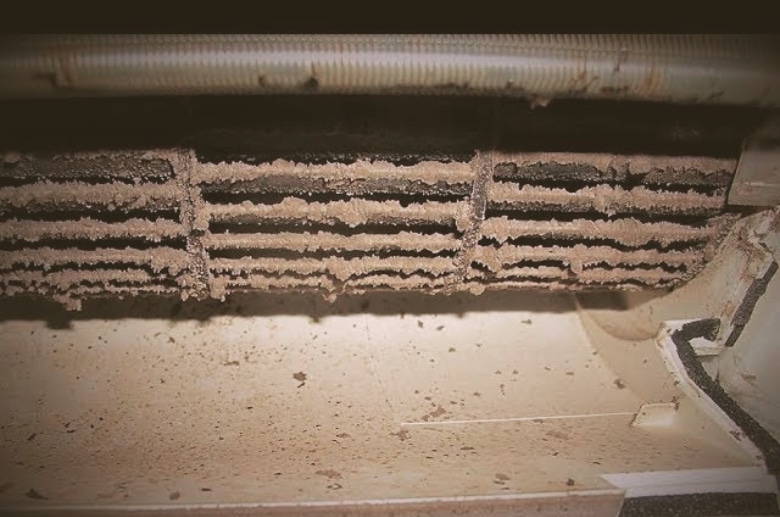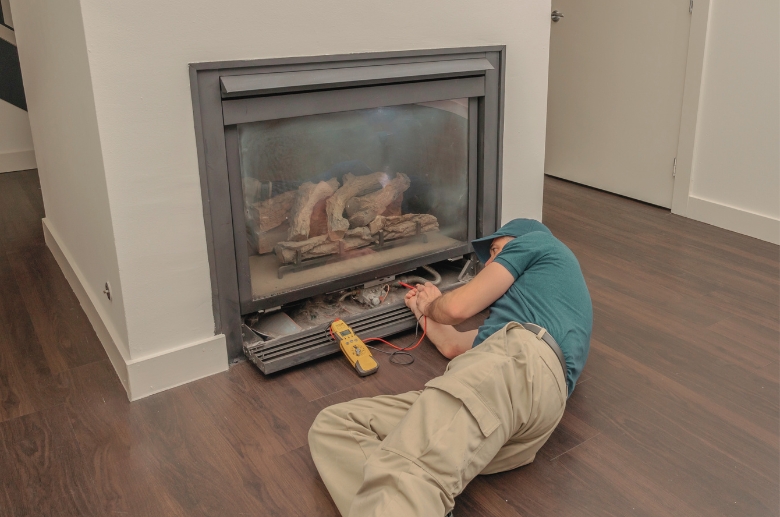A gas fireplace blower plays a crucial role in efficiently distributing warm air throughout your living space. It enhances the heating capacity of your gas fireplace by circulating the heated air, ensuring that the entire room benefits from the warmth.
Yet, sometimes, even the most reliable blower sputters and falls silent. But don’t let a cold shoulder from your fireplace get you down!
This guide looks into the top five culprits behind a gas fireplace blower not working and provides solutions to get that blower back in operation.
From simple power checks to identifying worn-out components, you’re about to deal with the issues from a professional’s perspective.
——
Do You Need to Hire Chimney & Fireplace Expert?
Get free quotes from qualified experts near you. No commitment required!
——
Common Reasons for a Gas Fireplace Blower Not Working
Here are the common reasons why your gas fireplace blower isn’t working as it’s supposed to.
1. Faulty Power Supply
A common reason for a gas fireplace blower not working is a faulty power supply. Before looking into more complex issues, it’s essential to ensure that the blower is receiving power.
Check if the blower is plugged in securely, and inspect the power outlet for functionality. Sometimes, a blown fuse or a tripped circuit breaker could be the issue.
If the blower has a switch or remote control, confirm that it is set to the appropriate setting. If power-related issues persist, consider replacing a blown fuse or resetting the circuit breaker, and always ensure that the power source is reliable.
2. Blower Motor Issues

The blower motor is a critical component responsible for driving the fan that circulates warm air. If the blower motor experiences problems, it can result in the gas fireplace blower not working. Common issues with the blower motor include wear and tear, lack of lubrication, or electrical failures.
Regular electric motor maintenance, such as lubricating the motor as per the manufacturer’s recommendations, can extend its lifespan. If the motor is making unusual noises or fails to start, it may require professional inspection and possible replacement.
3. Thermostat Problems
The thermostat controls when the gas fireplace blower should activate and deactivate based on the desired room temperature. If the blower is not turning on when it should, thermostat problems could be the cause.
Issues with thermodiscs, which are temperature-sensitive devices within the thermostat, can lead to inaccurate temperature readings. This can cause the blower to either not start or run continuously.
Check the thermostat and replace it if necessary. For thermodisc issues, consulting a professional for replacement is advisable.
4. Dirty or Blocked Blower Blades

Over time, dust and debris can accumulate on the blower blades, affecting their performance. If the blades are dirty or blocked, the blower may struggle to circulate air efficiently.
Regular cleaning is crucial to maintaining optimal functionality. Use a soft brush or compressed air to remove any dust or debris. Ensuring that the blower blades remain clean allows for smooth operation, preventing unnecessary strain on the motor and enhancing overall efficiency.
5. Limit Switch Malfunction
Gas fireplaces are equipped with limit switches to prevent overheating. If the limit switch malfunctions, it may cause the blower to shut off prematurely or not turn on at all.
This is a safety feature designed to protect the fireplace and surrounding area from excessive heat. If the limit switch is the issue, it may need adjustment or replacement.
A gas fireplace repair technician can diagnose the limit switch’s condition and take appropriate measures to ensure it functions correctly, maintaining a safe and efficient gas fireplace operation.
Attempting to fix it yourself can be dangerous since it involves complex systems and potential safety hazards.
How Do I Troubleshoot a Gas Fireplace Blower That Won’t Turn On?
Here’s a quick way to help you address the potential problems discussed above:
Step 1. Turn the Fireplace On and Off
Turn off the fireplace completely using the on/off switch or remote. Wait for a minute, then turn it back on. This can resolve temporary glitches and reset any internal safeguards.
While it’s off, verify that the outlet supplying power to the fireplace is functioning. Plug another appliance into the outlet to confirm sufficient voltage.
Additionally, ensure the pilot light is lit, and the gas supply valve is open. By addressing these basics upfront, you can eliminate simple issues before delving into more complex troubleshooting.
Step 2. Check the Thermostat
Ensure the thermostat switch is set to “On” and the desired fan speed is selected. Double-check if your model uses batteries, and replace them if they’re weak. If the blower takes forever to activate (say, over 10 minutes), consider repositioning the thermostat sensor.
Ideally, place it on the bottom of the firebox, where it catches heat quickly, triggering the fan sooner for optimal warmth.
Step 3. Inspect Electrical Connections
Check power outlets, cords, and connections for any issues. Address loose or damaged electrical components by looking for signs of wire fatigue, fraying, or corrosion.
Ensuring a secure electrical connection is vital for the proper functioning of the gas fireplace blower.
Step 4. Clean the Blower Blades
Dust and debris buildup can impede the blower’s ability to spin freely, leading to overheating and shutdowns. To clean the blades, follow these steps:
- Safely turn off the power to the fireplace and blower. Let it cool completely.
- Remove the blower access panel ( use your fireplace manual for instructions).
- Wipe the blades gently with a soft, dry cloth.
- For stubborn debris, use tweezers to carefully remove it from the fan shaft and around the motor. Avoid bending the blades.
- Replace the access panel and carefully turn the power and fireplace back on.
Keeping your fireplace clean will not only ensure optimal blower performance but also prevent issues with the gas fireplace going out.
Step 5. Test the Limit Switch
Another way to address a gas fireplace blower not working is to scrutinize the limit switch. Verify its functionality by conducting tests and checking for continuity and proper electrical connections.
To test the limit switch, turn on the furnace, let it run, and then manually press the switch. If the furnace shuts off, the limit switch is functioning; if not, it may need replacement.
If the limit switch is faulty, replace it with a compatible unit. This vital component plays a crucial role in regulating the blower’s operation and ensuring optimal performance in distributing warm air throughout your space.
By following these troubleshooting steps, you can address common issues preventing your gas fireplace blower from turning on. If problems persist, seek professional assistance to ensure the safety and efficiency of your gas fireplace system.
——
Do You Need to Hire Chimney & Fireplace Expert?
Get free quotes from qualified experts near you. No commitment required!
——
Can You Replace a Fireplace Blower Yourself?
It’s possible to replace a fireplace blower yourself but ensure your safety by following the manufacturer’s guidelines and turning off gas and electricity.
For complex blower issues, such as replacing the gas fireplace entirely or installation, seek professional help. Gas appliances involve potential hazards, and incorrect installation can lead to serious consequences.

Qualified technicians possess the necessary expertise to handle intricate repairs and installations, ensuring safety and compliance with regulations. When choosing a technician, prioritize licensed professionals with experience in gas fireplace systems, and consider seeking recommendations or checking reviews for reliable service.
How Much Does It Cost to Replace a Gas Fireplace Blower?
The cost of replacing a gas fireplace blower can vary, with the average blower unit ranging from $100 to $400. Professional installation may add another $100 to $200. DIY replacement can save on labor costs.
You can expect to spend around $140 when you do it yourself. It’s crucial to follow manufacturer guidelines for safety. Professional installation ensures proper setup but adds to the overall expense.
Blower Maintenance Tips to Avoid Future Issues
Before we wrap up, here are some maintenance tips to avoid future issues with your gas fireplace blower:
- Regular Cleaning: Remove dust with a soft brush; vacuum crevices carefully.
- Inspection Routines: Check for loose wires; inspect for any unusual noises.
- Recommended Maintenance Schedule: Clean blower every 3 months; schedule professional inspection annually.
- Optimal Gas Fireplace Performance: Lubricate motor bearings; tighten loose screws for efficient operation.
- Prevent Future Blower Issues: Monitor gas fireplace flames; address issues promptly; replace worn components.
Conclusion
A sluggish or silent blower shouldn’t spell doom for your cozy evenings by the fire. By systematically checking the five culprits we outlined, from clogged filters to faulty switches, you can likely restore your gas fireplace to its cheery, heat-distributing glory.
Remember, a little preventive care – like annual filter cleaning and professional inspections – goes a long way in keeping your blower and the entire fireplace system purring contentedly.
If you encounter a gas fireplace blower not working, grab your toolbox, channel your inner detective, and with a bit of troubleshooting, you’ll be basking in the warm glow of a perfectly functioning gas fireplace once again.






